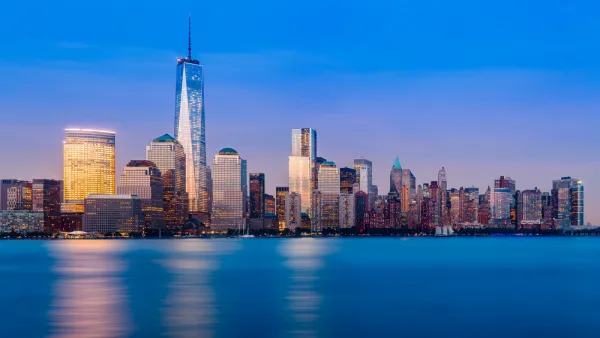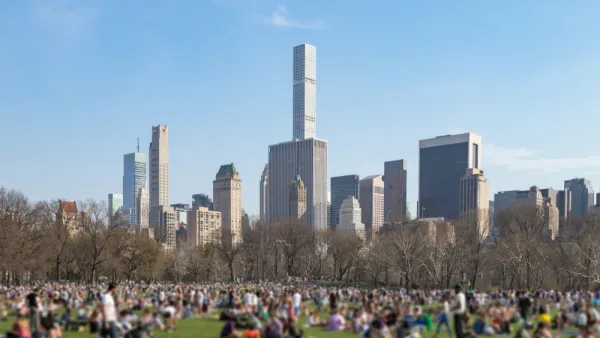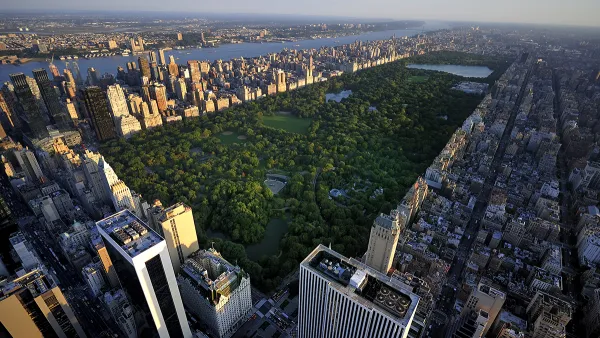Kicking off its in-depth examination of the ways in which New York City has been remade during Mayor Bloomberg's tenure, Matthew Schuerman looks at the city's astonishing vertical growth, a significant feat considering the shadow of 9/11.
"In research conducted for WNYC, NYU's Furman Center for Real Estate and Urban Policy determined that new buildings constructed between 2000 and 2010 were taller - in terms of the number of floors - than those built during the previous decade - in all but six of the city's 59 community boards. Those increases can be found in areas where zoning rules had been changed to accommodate taller buildings, such as downtown Brooklyn, as well as areas that saw no rezonings, such as Washington Heights and Inwood, where developers took advantage of old zoning rules that allow buildings to be much bigger than they were."
During Bloomberg's tenure, 7 of the city's 20 tallest buildings were constructed.
"Real estate developers say the biggest reason they built bigger and taller was because Mayor Bloomberg projected the sense that the city had a future, and that the future looked bright (at least to them and the people able to afford the 360-degree views from atop their towers)," explains Schuerman.
"Francis Morrone, an architectural historian and author of the forthcoming Guide to New York City Urban Landscapes, said he appreciates that Bloomberg is trying to keep pace with London and Shanghai in the competition for global companies. But Morrone said the mayor's growth agenda also has a major downside. He cited a 2009 study by the Center for an Urban Future [PDF] that argued that tens of thousands of middle-class New Yorkers were leaving the city because of the high cost of living."
"The city is going to survive. The city is going to thrive," Morrone said. "Not all the people in the city are going to thrive, or even continue living here."
Other entries in the "New York Remade" series have looked at the Mayor's efforts to expand affordable housing and lengthening commutes for the city's poorer residents.
FULL STORY: New York, the Vertical City, Kept Rising Under Bloomberg

National Parks Layoffs Will Cause Communities to Lose Billions
Thousands of essential park workers were laid off this week, just before the busy spring break season.

Retro-silient?: America’s First “Eco-burb,” The Woodlands Turns 50
A master-planned community north of Houston offers lessons on green infrastructure and resilient design, but falls short of its founder’s lofty affordability and walkability goals.

Delivering for America Plan Will Downgrade Mail Service in at Least 49.5 Percent of Zip Codes
Republican and Democrat lawmakers criticize the plan for its disproportionate negative impact on rural communities.

Test News Post 1
This is a summary

Test News Headline 46
Test for the image on the front page.

Balancing Bombs and Butterflies: How the National Guard Protects a Rare Species
The National Guard at Fort Indiantown Gap uses GIS technology and land management strategies to balance military training with conservation efforts, ensuring the survival of the rare eastern regal fritillary butterfly.
Urban Design for Planners 1: Software Tools
This six-course series explores essential urban design concepts using open source software and equips planners with the tools they need to participate fully in the urban design process.
Planning for Universal Design
Learn the tools for implementing Universal Design in planning regulations.
EMC Planning Group, Inc.
Planetizen
Planetizen
Mpact (formerly Rail~Volution)
Great Falls Development Authority, Inc.
HUDs Office of Policy Development and Research
NYU Wagner Graduate School of Public Service





























